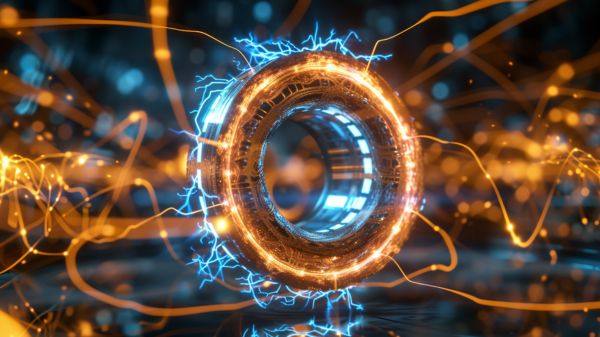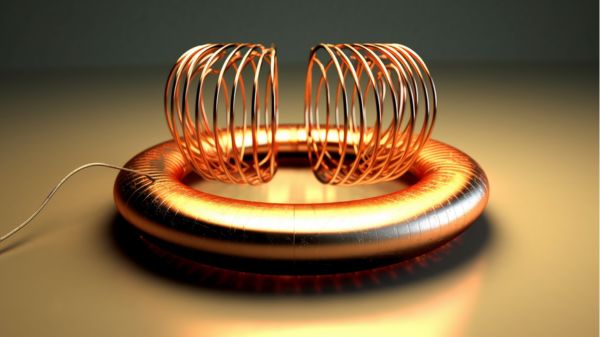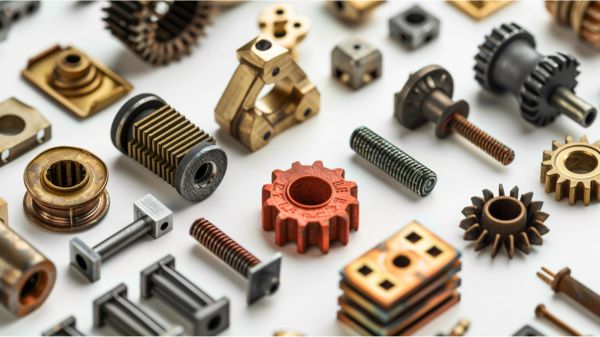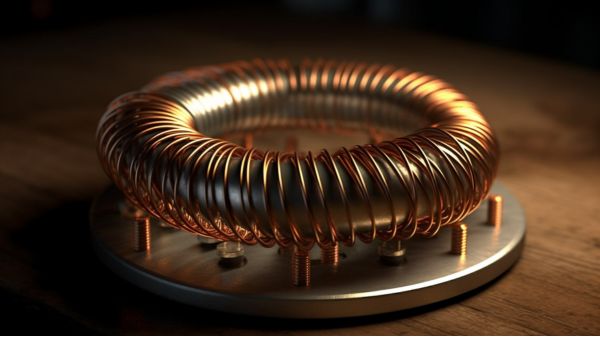9 Easy Steps to Build a Magnetic Field Generator
Imagine having the power to create your own magnetic field, just like a conductor leading an orchestra, guiding the movement of invisible forces. With just a few simple steps, you can build a magnetic field generator.
By following these straightforward instructions, you will unlock the potential to power small devices, conduct experiments, and explore the fascinating world of magnetism. So, are you ready to embark on this electrifying journey and tap into the limitless possibilities of magnetic fields?
Key Takeaways
- Proper wire selection and number of turns are crucial for efficient magnetic field generation.
- Choosing the right core material and size is important for the design and use of the generator.
- Securely connecting the wire ends to the power source terminals is essential for safety.
- Testing the strength of the magnetic field using appropriate tools helps ensure optimal performance.
Gather Necessary Materials
To begin building a magnetic field generator, gather all the necessary materials. The first step towards harnessing the power of magnetic fields is to ensure that you have all the essential components. These materials are crucial for the successful construction of your generator, and it’s essential that you gather them before proceeding.
First and foremost, you’ll need a power source. This can be a battery or a power supply unit that can provide the necessary electrical energy to drive the generator. Additionally, you’ll require copper wire, as it’s a key element in the creation of magnetic fields. Make sure to choose a wire with a suitable gauge to handle the desired current.
Next, you’ll need a magnetic core, such as iron or steel. This core will help concentrate and amplify the magnetic field produced by the generator. Additionally, gather neodymium magnets, which are known for their strong magnetic properties.
Lastly, don’t forget about the necessary tools, such as wire strippers, pliers, and a soldering iron. These tools will aid in the assembly and connection of the components.
Choose the Right Type of Wire
When choosing the right type of wire for your magnetic field generator, consider the specific design and intended use of the generator to determine the number of wire turns needed. The number of turns is an important factor in determining the magnetic field strength of the generator.
Thicker wire with a lower gauge can handle higher currents and may require fewer turns. This is because the thicker wire has a larger cross-sectional area, allowing it to carry more current without overheating. On the other hand, thinner wire with a higher gauge may require more turns to achieve the same magnetic field strength.
Different wire types may also require different numbers of turns to achieve the desired magnetic field strength. Some wire types have higher resistivity, which means they offer more resistance to the flow of current. This resistance can affect the number of turns needed to generate a strong magnetic field.
It is important to note that there is a limit to how many turns can be added before the magnetic field reaches saturation. At this point, adding more turns will not significantly increase the magnetic field strength. Therefore, it is crucial to determine the optimal number of turns for your specific design and intended use.
By adjusting the number of wire turns, you can also change the voltage or current output of the generator. Increasing the number of turns will result in a higher voltage output, while decreasing the number of turns will result in a higher current output.
Consider the table below for a summary of the relationship between wire turns and the magnetic field generator:
| Wire Thickness | Wire Gauge | Number of Turns |
|---|---|---|
| Thicker | Lower | Fewer |
| Thinner | Higher | More |
Determine the Number of Wire Turns Needed
Consider the specific design and intended use of your magnetic field generator to determine the optimal number of wire turns needed for maximum magnetic field strength and electricity production.
Increasing the number of wire turns in the generator coil can strengthen the magnetic field and result in higher electricity production. However, it’s important to find the right balance, as too many wire turns can lead to increased resistance and decreased efficiency.
To determine the number of wire turns needed, consult a professional or follow a design guide specific to your generator type. Factors such as the desired voltage and current output, available space, and desired efficiency should be considered.
The number of wire turns affects the change in flux, which is the measure of how the magnetic field passing through the coil changes over time. Increasing the number of wire turns increases the amount of magnetic field passing through the coil, resulting in a greater change in flux. This, in turn, leads to a stronger magnetic field and enhanced electricity production.
Wind the Wire Around a Core
To effectively wind the wire around the core, there are a few key points to consider.
- When selecting a core, choose one that’s suitable for your application, taking into account factors such as material composition and magnetic permeability.
- Employ proper wire winding techniques to ensure an even and tightly wound coil, as this will maximize the magnetic field strength.
- Understand the importance of coil tightness, as a loose coil may result in reduced efficiency and electricity production.
Core Selection Tips
To optimize the performance of your magnetic field generator, careful consideration must be given to the selection of a suitable core around which to wind the wire. The core serves as the foundation for the magnetic field and plays a crucial role in the efficiency of the generator.
When selecting a core, it’s important to consider factors such as the desired voltage and current output, available space, and overall efficiency. The core material should have high permeability to enhance the magnetic field strength.
Additionally, the core shape should be chosen based on the specific design and intended use of the generator. Consulting a professional or design guide can provide valuable insights and help determine the optimal core selection for your magnetic field generator.
Wire Winding Techniques
For optimal performance and efficiency, the wire winding technique used to wrap the wire around the core of the magnetic field generator must be executed with precision and care. To achieve the desired magnetic field strength, follow these wire winding techniques:
- Choose the appropriate core material and size for the wire winding based on the generator’s design and intended use.
- Ensure uniform and tight winding to optimize the magnetic field’s strength and the generator’s efficiency.
- Consider the direction of winding (clockwise or counterclockwise) to align with the desired magnetic field direction.
- Use a winding technique that minimizes overlapping and ensures each turn is evenly spaced to prevent coil shorting.
Importance of Coil Tightness
Coil tightness plays a crucial role in determining the magnetic field strength and overall efficiency of the magnetic field generator. Proper coil tightness ensures optimal performance and prevents unwanted resistance.
The number of wire turns and coil tightness directly impact the generator’s voltage, current output, and overall efficiency. Insufficient coil tightness can lead to reduced magnetic field strength and lower electricity production. To achieve the desired magnetic field strength, it’s essential to wind the wire tightly around the core. The tighter the coil, the stronger the magnetic field will be.
It’s recommended to consult a professional or follow a design guide to ensure the proper tightness and winding of the wire. By paying attention to coil tightness, you can maximize the efficiency and effectiveness of your magnetic field generator.
Connect the Wire to a Power Source
To connect the wire to a power source, start by ensuring proper insulation and safety measures are in place.
Verify the polarity and make sure the wire is securely attached using appropriate connectors and terminals.
Once connected, monitor the generator closely to ensure its proper functioning and the generation of the desired magnetic field.
Power Source Connection
To establish a connection between the wire and a power source, you’ll need to carefully attach the wire ends to the appropriate terminals, ensuring a secure and reliable electrical connection. This step is crucial in order to provide the necessary power to generate a magnetic field.
Here are the key steps to follow for a successful power source connection:
- Locate the power source terminals: Identify the positive (+) and negative (-) terminals on the power source. These terminals are usually labeled or color-coded for easy identification.
- Strip the wire ends: Use wire strippers to remove a small section of insulation from the wire ends. This will expose the bare copper wire, allowing for a better electrical connection.
- Connect the wire ends: Attach the stripped wire ends to the corresponding terminals on the power source. Make sure to match the polarity correctly, connecting the positive wire to the positive terminal and the negative wire to the negative terminal.
- Secure the connection: Use appropriate connectors, such as screws or clamps, to secure the wire ends to the terminals. Ensure that the connection is tight and secure, minimizing any risk of loose connections or electrical hazards.
Wire Attachment Process
After successfully establishing a secure and reliable electrical connection between the wire ends and the power source terminals, the next step is to attach the wire to the power source using appropriate connectors. These connectors ensure a strong and stable connection, preventing power loss or electrical hazards.
It’s crucial to follow safety guidelines and regulations when connecting the wire to the power source. This ensures the safety of both the user and the equipment.
Additionally, it’s recommended to test the connection to verify proper functionality and current flow. By using insulated wire, you can prevent electrical shorts or damage.
Magnetic Field Generation
To generate a magnetic field, securely connect the wire to a power source, ensuring compatibility and following proper safety procedures. Here are the steps you need to take:
- Choose a power source that matches the specifications of the wire to prevent damage or overheating.
- Inspect the wire and power source for any signs of wear or damage before making the connection.
- Connect the wire to the power source using the appropriate connectors or terminals.
- Double-check the connection to ensure it’s secure and free from any loose or exposed wires.
Create a Magnetic Field
To create a magnetic field, it’s crucial to carefully consider the design of your magnetic field generator. One of the key factors to determine is the optimal number of wire turns. This number plays a significant role in the strength of the magnetic field and the efficiency of electricity production.
Increasing the number of wire turns in the generator will result in a stronger magnetic field. This, in turn, will lead to higher electricity production. However, it’s essential to strike a balance. Too many wire turns can lead to increased resistance, which can ultimately decrease the efficiency of the generator.
To determine the optimal number of wire turns, it’s recommended to consult a professional or follow a design guide. Factors such as desired voltage and current output, available space, and desired efficiency should be taken into account. These considerations will help you create a magnetic field generator that meets your specific needs and goals.
Test the Strength of the Magnetic Field
You can assess the strength of the magnetic field generated by using various methods, including observing the direction of a compass needle near the generator. This simple method allows you to quickly determine the presence and strength of the magnetic field.
However, if you need more precise measurements, you can use a gauss meter to quantify the intensity of the magnetism produced by the generator. This device provides accurate readings and allows you to precisely measure the strength of the magnetic field.
Another way to test the strength of the magnetic field is by comparing the deflection of a beam of charged particles, such as electrons, when passing through the magnetic field of the generator. By measuring the angle of deflection, you can assess the strength of the magnetic field.
Additionally, you can use a Hall Effect sensor to measure the magnetic field strength. This sensor detects the voltage produced when exposed to the generator’s magnetic field, providing an accurate measurement of its strength.
To visualize and assess the strength and distribution of the magnetic field lines, you can place magnetic material, such as iron filings, around the generator. The filings will align themselves along the magnetic field lines, allowing you to observe the field’s strength and pattern.
Adjust the Number of Wire Turns if Necessary
After assessing the strength of the magnetic field, the next step in building a magnetic field generator is to adjust the number of wire turns if necessary. This adjustment allows you to fine-tune the magnetic force and optimize electricity production.
By increasing the number of wire turns, you can strengthen the magnetic field, resulting in a more powerful generator. This, in turn, will boost the production of electricity. On the other hand, reducing the number of wire turns will weaken the magnetic force, which may be desirable in certain situations. However, it’s crucial to strike a balance because excessive resistance can hamper efficiency.
To help you determine the optimal number of wire turns, consider consulting a professional or referring to a design guide. These resources can provide valuable insights based on factors such as desired voltage and current output, available space, and efficiency goals. By recalibrating the number of wire turns, you can ensure that your magnetic field generator operates at its highest potential.
In order to visualize the impact of adjusting the number of wire turns, refer to the table below:
| Wire Turns | Magnetic Force | Electricity Production |
|---|---|---|
| Fewer | Weaker | Lower |
| More | Stronger | Higher |
| Balanced | Optimal | Efficient |
Use the Magnetic Field Generator for Desired Applications
The magnetic field generator can be utilized for various applications, ranging from renewable energy systems to small-scale power sources in remote areas.
Here’s how you can use the magnetic field generator for your desired applications:
- Renewable energy systems: By harnessing the power of Faraday’s law, the magnetic field generator can be integrated into renewable energy systems such as wind turbines or hydroelectric power plants. It converts the rotational motion of the turbine blades or water flow into electricity, providing a clean and sustainable source of power.
- Small-scale power sources: In remote areas where access to the grid is limited, the magnetic field generator can serve as a reliable power source. Whether it’s for lighting, charging electronic devices, or running small appliances, this generator can provide the electricity you need without the need for traditional power lines.
- Backup power supply: The magnetic field generator can also be used as a backup power supply in case of emergencies or power outages. With regular maintenance and monitoring, you can ensure that the generator is ready to provide electricity when you need it most.
- Customization for specific applications: The number of wire turns in the generator can be customized to meet the requirements of specific applications. By adjusting this parameter, you can optimize the efficiency and power output of the generator for your desired performance.
With the magnetic field generator, you have the freedom to generate electricity from renewable sources, power your devices in remote locations, and have a reliable backup power supply. Explore the possibilities and unlock the potential of this versatile tool.
Conclusion
Congratulations! You have successfully built a magnetic field generator using just 9 easy steps.
By following the outlined process, you were able to gather the necessary materials, connect the motor and magnet, and test the generator’s effectiveness.
With the ability to adjust the strength and polarity of the magnetic field, you can now explore various applications and experiment with different configurations.
So go ahead and unleash the power of your magnetic field generator!







One Comment
Comments are closed.